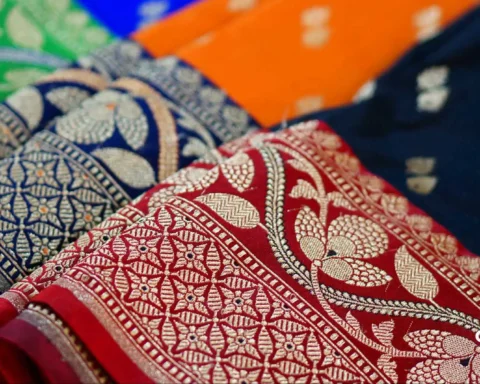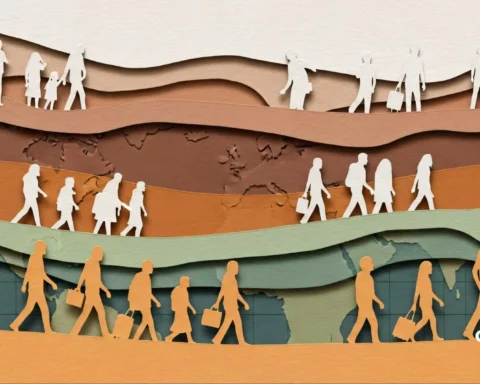As global warming continues to threaten the world, its dangers are perhaps felt the most by the indigenous communities of remote and rural areas. As climate-related dangers reach all-time highs, a particular community in Pakistan has found an ingenious way to protect their water supplies. Through glacier grafting and other traditional methods, the villagers continue to fight against the rising tide of climate-related disasters.
The Fragile Third Pole: A Region in Peril
In Pakistan’s remote northern mountains, where the impacts of climate change are being felt with apocalyptic force, local villagers have turned to traditional and innovative methods to fight the perils of glacial melt. Through activities like glacier grafting and the construction of ice stupas (artificial glaciers), the locals are working to preserve their water supply, rescue their farmlands, and ensure their sustainable future. This project bears witness to local resilience and offers valuable lessons to the rest of the world for the fight against climate change.
The northern part of Gilgit-Baltistan in Pakistan lies in the “third pole,” the region with the highest concentration of frozen water worldwide except for the Arctic and Antarctic. Glaciers here are the lifeline for millions of people through nourishing rivers, lakes, and streams, sustaining agriculture and livelihoods. But global warming is rapidly initiating the melting of glaciers, endangering local and international environments.

The Increasing Threat of Glacial Lake Outburst Floods
The effects of glacial melting are far-reaching. Besides losing precious water resources, the region faces the increasing menace of glacial lake outburst floods (GLOFs). These happen when glacial lakes are created through meltwater, overflow, and break. The occurrence of these then releases torrents of water that destroy everything in their wake. The 2022 megafloods in Pakistan were a reminder of the destructive power of climate change, and the floods impacted over 33 million individuals and cost $30 billion in losses.
In this perpetually declining world, local populations are not about to sit idle. With the most advanced glacier grafting technology, they are rising, trying to counter the devastating effects of climate change.
Glacier Grafting: Reviving an Indigenous Solution
As a response to these dangers, Pakistani villagers, with support from national and international organizations, are reviving and improving an old technique known as glacier grafting. The native process, or glacier farming/glacier seeding, entails the development of new glaciers by melting small pieces of ice above 4,000 meters in elevation.
It is a simple yet ingenious method. The villagers look for areas above 4,000 meters with little direct sunlight. They then drag two kinds of ice onto the location: dusty ice (which is “male” ice) and transparent glacier ice (which is “female” ice). The ice pieces are aligned side by side in a pit-like arrangement. Nearby streams add water to the mixture, and charcoal and straw layers cap and keep the ice from melting. The individuals pray and conduct rituals en route, showing their cultural affinity for the country and the natural resources.
Over time, grafted ice gains snow and rainwater over decades, ultimately developing into a full-grown glacier. It is a long-term solution to water scarcity by producing sustainable ice and meltwater resources.
Dr. Zakir Hussain Zakir, Director of Planning and Development for the University of Baltistan and a project senior worker, performed several successful glacier grafting operations in Gilgit-Baltistan from 2019 to 2024. These newly created glaciers should assist in maintaining constant water sources in the future to offset some of the adverse effects of climate change.
Ice Stupas: Temporary Solution to Water Shortage
Though glacier grafting is a long-term solution, villagers in Pari village of Kharmang district also create ice stupas to address seasonal water shortages. These artificial glaciers are formed every year during November and December. The procedure is easy but very effective. Water is redirected downwards from a spring 2,000 feet above the building site. As the water is ejected into the cold air, it freezes to form ice crystals, accumulating in layers to create a vast cone-shaped structure. Over the subsequent three to four months, the ice stupa keeps increasing in thickness, up to 30 to 50 feet.
Before the summer months, as much as six million litres of water are stored in the ice towers, slowly released as they melt. This creates a constant water supply for drinking purposes, irrigation, and animal consumption, eliminating the perennial deficit of water that has long afflicted the region. Farmers in the local area point to the revolutionary difference the ice stupas have made in their lives. Without them, women and people would have worked hard to obtain water from far and inconsistent sources. The artificial glaciers have curbed labour water fetching, freeing women and children to study and other livelihood pursuits.
Besides glacier grafting and ice stupas, local populations and the United Nations Development Programme (UNDP) have also established early warning systems (EWS) to shield communities from GLOFs. Such remote monitoring stations have advanced sensors that promptly monitor glacial lake fluctuations and issue flood warnings.
The local volunteers learn how to use and maintain these systems, thus making them sustainable. Abidin Khan, a volunteer, highlights the efficacy of the warning systems in averting disasters. The system sends early evacuation alerts, enabling villagers to evacuate and save their livestock and valuables safely.
The innovation and resourcefulness of Pakistani villagers in combating glacier melt are a lesson to the world. Glacier grafting and ice stupas can be relatively low-technology and inexpensive but are practical climate adaptation tools that can be scaled up elsewhere in other mountain regions with similar challenges. These methods also have the potential to reconcile traditional knowledge and new science. Governments and institutions can develop more sustainable and holistic measures by integrating Indigenous practices into climate response strategies.
In addition, the success of glacier grafting is eloquent testimony to the strength of community-initiated effort. The voluntary involvement of the villagers, cultural respect for nature, and determination to safeguard their way of life say much about the strength of bottom-up action in the face of global challenges.
Despite increasing threats of climate change, the citizens of Gilgit-Baltistan stand firm in their determination to protect their homeland and the upcoming generations. By employing glacier grafting, ice stupas, and early warning systems, they are coping with a fast-changing climate and setting precedents for sustainable measures that can be extended to other high-risk areas. Their story is witness to the need for resilience and innovation at the local level to counteract climate change. It is a hope-filled message that, through hard work and creativity, even the most vulnerable communities can craft solutions to safeguard their means of subsistence and the world.










